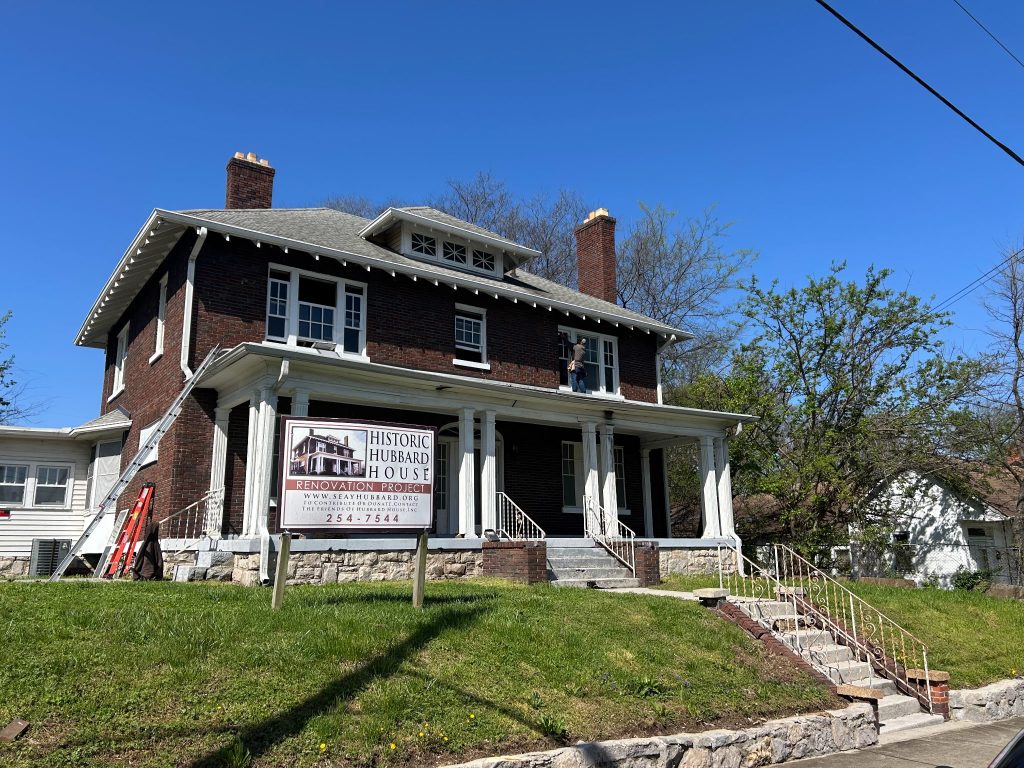NASHVILLE, Tenn. — Restoration work has begun on the George W. Hubbard House, the former residence of Meharry Medical College’s first president, thanks to a $100,000 African American Cultural Heritage Action Fund grant from the National Trust for Historic Preservation.
The effort, led by the nonprofit Friends of Hubbard House, marks the first phase of renovations to the 1920-built home located adjacent to Meharry’s original campus at 1109 First Avenue South. Unoccupied for more than 20 years, the house is owned by Seay Hubbard United Methodist Church, which purchased the property after Meharry relocated to its current site on Dr. D.B. Todd Jr. Boulevard.
The long-term vision is to convert the house into a community health and service center offering free medical, dental, mental health, and job placement services to residents of the historically underserved Trimble Bottom area. The vision includes having student doctors and dentists from Meharry Medical College staff the clinic under faculty supervision, continuing the college’s longstanding tradition of community service.
“That area is a food desert and a medical desert,” said Robert Churchwell Jr., president of the board of Friends of Hubbard House, referring to the surrounding J.C. Napier and Trimble Bottom neighborhoods. “What we will be doing is continuing the legacy of health Dr. Hubbard had when the medical college was originally placed in that area. We feel it is truly needed and will serve a lot of people.”
CD Steger Construction Inc., based in Brentwood, began renovations at the end of March. Phase I includes repairs to the home’s original windows, rehabilitation of the exterior doors, and improvements to the building’s entry points. The grant proposal was written with support from Caroline Eller, a staff member of the Metropolitan Nashville Historical Commission.
The Friends of Hubbard House organization has worked diligently over the last few years to conduct several pre-planning tasks, including securing a cost estimate for rehabilitation, obtaining as-built drawings from a local architectural firm, and completing interior abatement for contaminants, with a $57,000 grant secured from Wells Fargo. The building is structurally sound but is in need of historically sensitive rehabilitation so that the space can be occupied by new community services, including a medical clinic.
Designed by Moses McKissack III of McKissack & McKissack—the oldest minority-owned architecture and engineering firm in the country—the Hubbard House is a rare remaining example of early 20th-century African American residential architecture in Nashville. It retains its Four Square layout and Colonial Revival features.
Listed on the National Register of Historic Places in 1973, the house is noted for its contributions to Nashville’s medical, social, and educational history. It is also the only extant structure from Meharry Medical College’s original campus. Founded in 1876, Meharry is one of Nashville’s four Historically Black Colleges and Universities and has played a major role in advancing medical education for African Americans.
The McKissack family, whose roots in architecture and construction date back before the Civil War, played a pivotal role in shaping Nashville’s built environment. Moses and Calvin McKissack were among the first licensed Black architects in the Southeast. Their early projects included Hubbard House, homes in the West End, and the Carnegie Library at Fisk University.
Renovations are part of the first phase of the project. Friends of Hubbard House are seeking donations and additional grants to complete the effort. For more information, contact Robert Churchwell Jr. at robert.churchwell@comcast.net. Donations may be mailed to Friends of Hubbard House, 1116 First Ave. South, Nashville, TN 37210


